In this piece, we aim to raise awareness about the potential threats posed by Near-Earth Objects (NEOs), specifically focusing on the Taurid Meteor Complex — a collection of debris that Earth encounters twice annually, in the spring and fall.
While most meteor showers pass unnoticed by the general population, the Taurid Complex is of particular interest to scientists and catastrophists alike. This meteor stream has been linked to significant historical impact events, including the Tunguska explosion in 1908 and the Younger Dryas Impact Hypothesis, which may have triggered a period of abrupt climate change that coincided with the extinction of megafauna and the destruction of early civilizations.
The Taurid Meteor Complex: Stream, Shower, and Swarm
The Taurid Meteor Complex is a vast and diffuse stream of debris believed to be the remnants of a disintegrating comet, likely Comet Encke. Unlike more concentrated meteor showers, such as the Perseids, the Taurids are spread out over a large portion of the sky and persist for an extended period each year.
This complex is split into two primary branches: the Northern Taurids and the Southern Taurids, which Earth passes through each fall. In the spring, we encounter the complex again, but these encounters tend to produce fewer visible meteors. In 2024, we entered the Taurid field on September 10th.
When discussing meteor phenomena, it’s useful to be acquainted with the distinctions between terms often used interchangeably: meteor streams, showers, and swarms.
Meteor Stream: A meteor stream consists of debris left behind by a comet or asteroid that Earth intersects with as it orbits the Sun. This collection of particles, often referred to as "cosmic dust," burns up upon entering Earth's atmosphere, creating visible streaks of light.
Meteor Shower: A meteor shower is a period when a larger concentration of meteors is observed as Earth moves through a denser part of a meteor stream. These are regular, predictable occurrences that take place annually and include the Taurids, Perseids, and Leonids. There are 110 such showers.
Meteor Swarm: The term "meteor swarm" refers to a dense clumping of larger meteoroids or fragments within a stream. These swarms are of particular concern due to the potential for catastrophic impacts. Scientists believe that the Taurid Complex contains such swarms, which include larger fragments that could pose a significant danger to Earth. (Illustration above)
The Taurid Complex is also linked to the concept of dark comets, celestial objects that have lost much of their volatile material and therefore do not display the characteristic bright coma and tail of a comet. This makes them difficult to detect. Moreover, some researchers argue that larger fragments, possibly dark comets, within the Taurid Swarm could pose an unseen threat, as their trajectories might not be detected until it’s too late.
Comets, Asteroids, and Dark Comets
To better understand the Taurid Complex, it’s essential to distinguish between comets, asteroids, and dark comets:
Comets are icy bodies that originate from the outer regions of the solar system. As they approach the Sun, the heat causes their volatile material to vaporize, forming a glowing coma and tail. Comets are thought to be the source of many meteor streams, including the Taurids.
Asteroids are rocky objects that typically reside within the asteroid belt between Mars and Jupiter. Unlike comets, asteroids do not display tails or comas. However, some asteroids are considered "active," showing characteristics more akin to comets.
Dark Comets, as mentioned earlier, are comets that have shed much of their volatile material. Without the bright tails that make them visible, these objects are harder to detect but no less dangerous. Some dark comets may resemble asteroids but still contain enough mass to cause considerable damage if they collide with Earth.
The Taurids and the Tunguska Event
One of the most famous impact events in recent history is the Tunguska event of 1908. On the morning of June 30, 1908, an object exploded in the atmosphere over the Tunguska region of Siberia, flattening 2,000 square kilometers of forest and destroying 80 million trees.
At about 28,000 feet above the Earth’s surface, many scientists believe a chunk of rock or ice measuring up to tens of meters across broke apart from the heat and pressure of the atmosphere. Traveling at a speed of over 33,000 mph, this explosion would have created a shock wave about 1000 times more powerful than the bomb dropped on Hiroshima.
The explosion would have been as powerful as 10-15 megatons of TNT, on par with some of the largest thermonuclear bombs ever tested, like the Tsar Bomba, which had a yield of 50 megatons. A fragment from the Taurid Swarm entered the Earth's atmosphere and detonated mid-air, causing this massive devastation.
The Tunguska area remains relatively barren even today, and this could be due to several factors, including a lack of topsoil. The explosion likely stripped away the topsoil and drastically altered the soil’s fertility. The intense heat and shockwave from the explosion could have sterilized the soil, making it difficult for vegetation to regrow even 100+ years later.
While the Tunguska event remains one of the best known examples of the potential dangers posed by the Taurids, it is not the only instance of a catastrophic impact being linked to this complex. Moreover, some researchers argue that larger fragments or dark comets within the Taurid Swarm could cause even more significant impacts in the future.
The Taurid Complex is also responsible for the Chelyabinsk (Russia) meteor, which wounded over 1,500 people when it exploded in 2013.1
The Younger Dryas Impact Hypothesis
Another event linked to the Taurid Complex is the Younger Dryas Impact Hypothesis. Around 12,800 years ago, Earth experienced a sudden and dramatic shift in climate known as the Younger Dryas, a period of rapid cooling that lasted approximately 1,200 years ending 11,600 years ago. This event coincided with the extinction of many species of megafauna and a sharp decline in human populations.
The Younger Dryas Impact Hypothesis posits that a series of airbursts or impacts, likely from fragments of Comet Encke in the Taurid Complex, caused this sudden cooling. Evidence for such impacts include high levels of iridium, nanodiamonds, and other elements found in sediment layers dating to this period, which are typically associated with extraterrestrial objects.
These impacts likely injected significant amounts of water vapor and other particles into the atmosphere. The water vapor, in particular, played a crucial role by increasing cloud cover and reflecting sunlight away from the Earth’s surface, thereby causing a cooling effect. This phenomenon is similar to how volcanic eruptions can lead to temporary cooling by releasing aerosols that block sunlight.
Some theories even suggest that this catastrophic event could have contributed to the collapse of early human civilizations, such as Atlantis.
The Nördlingen Crater.
A notable study published in 2014 examined 13,000-year-old nanodiamonds from multiple locations across three continents. The researchers found an abundance of these tiny diamonds distributed over 50 million square kilometers across the Northern Hemisphere at the Younger Dryas boundary (YDB). This layer, rich in carbon, is often visible as a thin black line a few meters below the surface.
The presence of nanodiamonds, along with other high-temperature materials such as melt-glass and cosmic impact spherules, strongly support the hypothesis that a cosmic impact event, or series of events, occurred around 12,800 years ago. This phenomenon likely contributed to the abrupt climate changes and extinctions ascribed to the Younger Dryas period.
Cosmic impact events can generate pressures exceeding 100 GPa (almost a million times higher than atmospheric pressure at sea level) and temperatures above 1,700 °C. These extreme conditions are sufficient to transform carbon into nanodiamonds. Scientists estimate, for example, that 72,000 tons of nanodiamonds are embedded in the Nördlingen crater.
The Nördlingen diamonds are the result of an asteroid, which struck this area of Bavaria, a federal state in southern Germany, some 15 million years ago. The resulting impact left behind the Nördlingen Ries (or Ries crater), a massive depression that stretches more than nine miles across the German countryside, and is the site upon which Nördlingen sits today.2
An Advanced Civilization: Atlantis, Göbekli Tepe, and the Younger Dryas
The Younger Dryas Impact Hypothesis dovetails with a broader theory of an advanced civilization that may have existed before the end of the last Ice Age. Among the most famous accounts of this lost civilization is the story of Atlantis, as told by Plato. According to Plato, the story was relayed to his ancestor Solon by Egyptian priests, who described an advanced society that was destroyed in a cataclysm.
While Atlantis remains a subject of debate, other archaeological evidence, such as the mysterious site of Göbekli Tepe in modern-day Turkey, suggests that highly organized and sophisticated societies indeed existed during the Younger Dryas period. Göbekli Tepe, the world’s oldest temple complex, was built around 12,000 years ago, suggesting a level of social complexity not previously associated with that time period, as Graham Hancock explains in the one minute video below.3
Hancock, a popular author and researcher, has spent decades challenging mainstream narratives about prehistory. His controversial theories suggest that a highly advanced civilization existed during the late Pleistocene, only to be wiped out by a cosmic catastrophe.
His best-selling books, including Fingerprints of the Gods and Magicians of the Gods, argue that this ancient civilization had advanced knowledge of architecture, astronomy, and even cosmology — achievements that may have been inherited by later cultures, such as the Egyptians and Maya.
Hancock’s popularity has grown in recent years due to his Netflix series Ancient Apocalypse, where he further explores these theories. Despite facing criticism from traditional academics, his work has gained a broad audience, particularly among those intrigued by alternative history and lost civilizations.
Hancock’s theories align with the Younger Dryas Impact Hypothesis, providing a narrative where cosmic impacts not only influenced Earth’s climate but may have also contributed to the collapse of an advanced, forgotten society.
If the Younger Dryas event was indeed caused by an impact from the Taurid Complex, it raises the question of whether an advanced civilization, such as Atlantis, could have been destroyed by such a cataclysm. Plato’s account, combined with modern scientific research, offers a tantalizing possibility: a forgotten epoch of human history may have been cut short by a cosmic disaster.
I believe we are a species with amnesia, I think we have forgotten our roots and our origins. I think we are quite lost in many ways. And we live in a society that invests huge amounts of money and vast quantities of energy in ensuring that we all stay lost. A society that invests in creating unconsciousness, which invests in keeping people asleep so that we are just passive consumers of products and not really asking any of the questions.
Graham Hancock
The dates Solon recounted to Plato about Atlantis, as described in the dialogues Timaeus and Critias, place the destruction of Atlantis around 9,000 years before Solon’s time, which would be approximately 11,600 years ago. This timing coincides with the end of the Younger Dryas period.
This connection between the dates provided by Plato and the Younger Dryas Impact Hypothesis has fueled much speculation and alternative theories about the historical basis of the Atlantis story. Authors like Graham Hancock and Randall Carlson have explored these ideas extensively, suggesting that the catastrophic events described by Plato could be linked to real geological and climatic phenomena.
There have been, and will be again, many destructions of mankind arising out of many causes; the greatest have been brought about by the agencies of fire and water, and other lesser ones by innumerable other causes. There is a story, which even you have preserved, that once upon a time Phaethon, the son of Helios, having yoked the steeds in his father’s chariot, because he was not able to drive them in the path of his father, burnt up all that was upon the earth, and was himself destroyed by a thunderbolt. Now this has the form of a myth, but really signifies a declination of the bodies moving in the heavens around the earth, and a great conflagration of things upon the earth, which recurs after long intervals; at such times those who live upon the mountains and in dry and lofty places are more liable to destruction than those who dwell by rivers or on the seashore.
Plato, from the Timaeus
Detecting and Monitoring Near-Earth Objects
In recent decades, significant strides have been made in detecting, monitoring, and mapping Near-Earth Objects (NEOs). NEOs refer to asteroids and comets with orbits that bring them near Earth. Many NEOs pose no immediate threat, but it is the unpredictable or less-visible objects, such as dark comets, that present the greatest concern. The task of monitoring these objects is shared by a combination of space agencies, observatories, and defense programs worldwide.
NEOs are primarily detected through ground-based and space-based observatories. Ground-based telescopes use optical and radar technology to detect and track objects as they pass near Earth. Key observatories include the Pan-STARRS observatory in Hawaii and the Catalina Sky Survey in Arizona. These facilities, along with others, scan the sky nightly, searching for new objects and tracking known ones.
Space-based observatories, like NASA's NEOWISE mission, use infrared technology to detect objects that may be missed by ground-based telescopes due to factors like the brightness of the Sun or the Earth’s atmosphere. Infrared sensors are particularly effective at detecting dark comets and asteroids, which may be harder to see in visible light.
Once detected, NEOs are tracked and monitored for changes in their orbit that might bring them closer to Earth. This involves calculating the object’s trajectory, speed, and likelihood of collision using precise mathematical models. NASA’s Center for Near-Earth Object Studies (CNEOS), based at the Jet Propulsion Laboratory, plays a pivotal role in tracking and predicting the movements of these objects.
As part of global efforts, the Near-Earth Object Coordination Centre (NEOCC) in Europe also contributes to the mapping and risk assessment of NEOs. Collaborative projects like the International Asteroid Warning Network (IAWN) and the Space Mission Planning Advisory Group (SMPAG) provide platforms for sharing data and coordinating international defense efforts.
The Comet Research Group, part of a non-profit, charitable corporation that collaborates with 63 scientists from 55 universities in 16 countries, endeavors to “accurately assess the effects of comet impacts on human history, and to educate the international public about these effects.”
Planetary Defense and Mitigation Strategies
While monitoring is critical, the emerging field of Planetary Defense also focuses on how to mitigate or prevent potential impacts. NASA's Planetary Defense Coordination Office (PDCO) is responsible for coordinating efforts to detect hazardous NEOs and planning for potential deflection missions.
In 2022, NASA successfully conducted the DART (Double Asteroid Redirection Test) mission, the first attempt to deliberately alter the course of an asteroid. The mission aimed to test whether a spacecraft could nudge a small asteroid off its collision course with Earth.
Future plans include missions to develop kinetic impactors, which could push asteroids off their path by striking them at high speed, and gravity tractors, where spacecraft would fly alongside an asteroid to gradually alter its trajectory through gravitational pull.
Despite these advances, gaps remain in detecting and mitigating smaller objects, particularly dark comets and those originating from the outer reaches of the solar system. While existing technology is improving, many experts stress the need for increased funding and research to further develop planetary defense systems.
Without continued advancements, Earth remains vulnerable to the very real possibility of future impact events, like those that occurred in Tunguska and during the Younger Dryas period.
As Earth moves through the Taurid Complex during its annual spring and fall encounters, it becomes clear that the threat posed by Near-Earth Objects is very real. While the chances of a catastrophic impact are low in any given year, the evidence from events like Tunguska and the Younger Dryas impact serves as a serious reminder of the potential consequences.
Enjoy an interesting 3-hour deep dive with Randall Carlson:
The second season of Graham Hancock’s popular series, ‘Ancient Apocalypse,’ premiers October 16, 2024, on Netflix.4
N.B. The impetus for this article arises from the Virgin Mary’s prophecies at Medjugorje, specifically, “The Third World War will not take place” (July 12, 1982). This prophecy can be seen as either comforting or alarming. My thesis is simple: like the Vietnam village that “had to be destroyed in order to save it,” divine intervention may be required to prevent nuclear Armageddon (WWIII) and save our species from certain destruction.5
Ancient Apocalypse — Netflix Series (webpage)
The message about World War III not taking place was reportedly given to Ivanka Ivanković and Mirjana Dragićević in July 1982. According to the visionaries, the Virgin Mary assured them that despite the tensions and conflicts in the world, a global war would not occur.

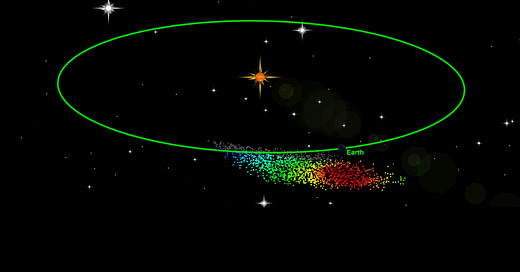



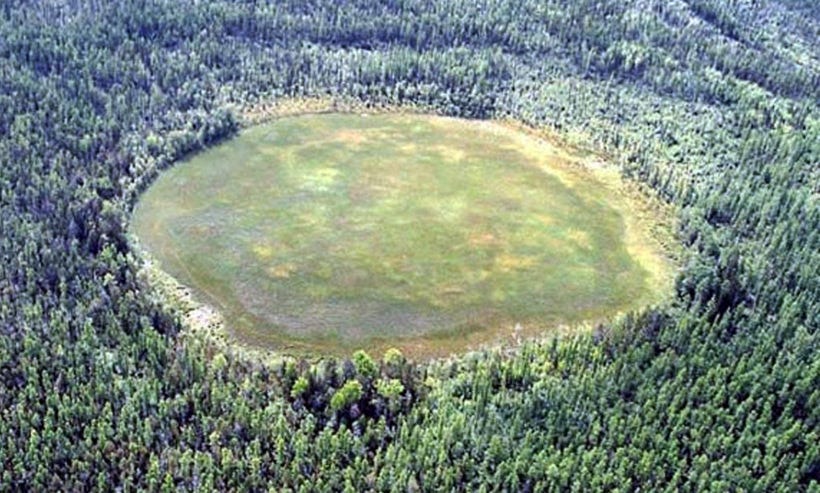

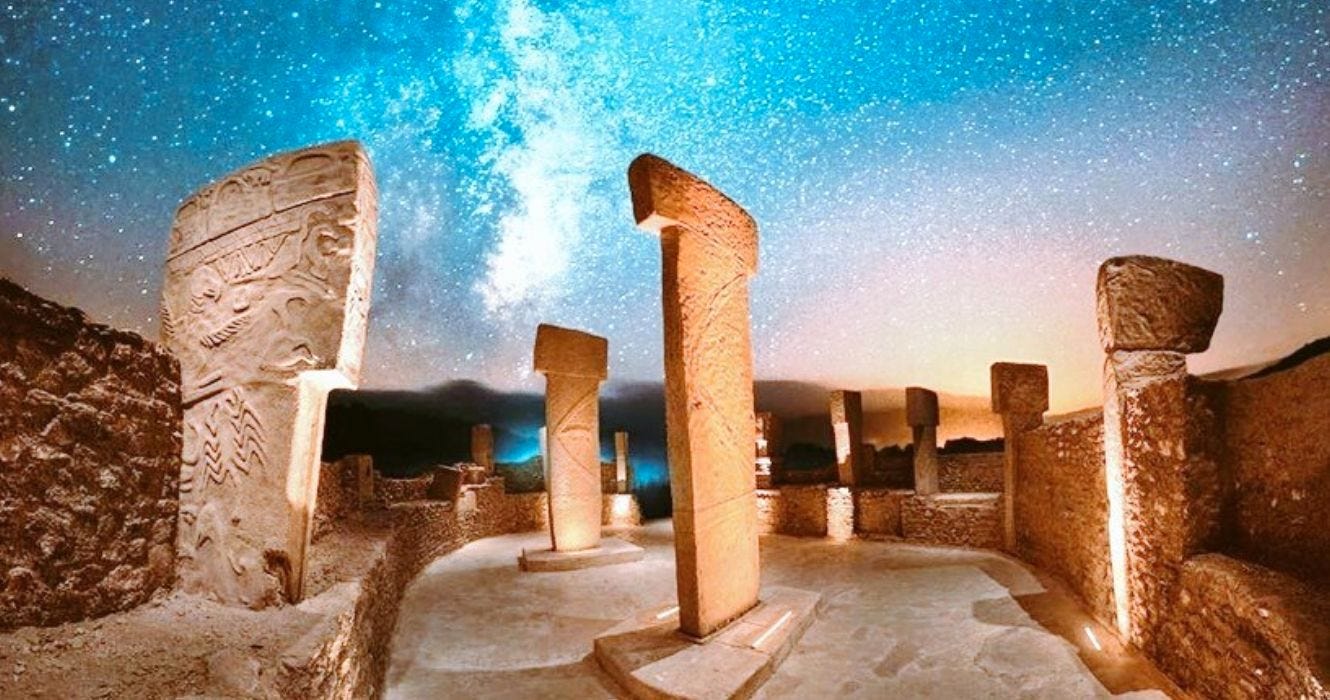
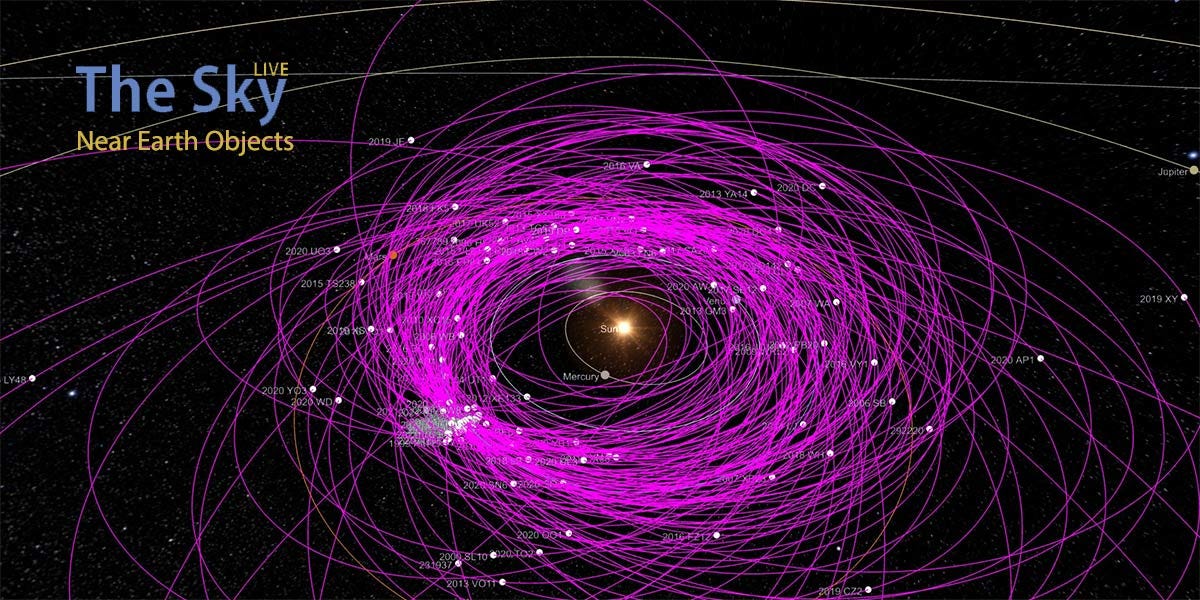
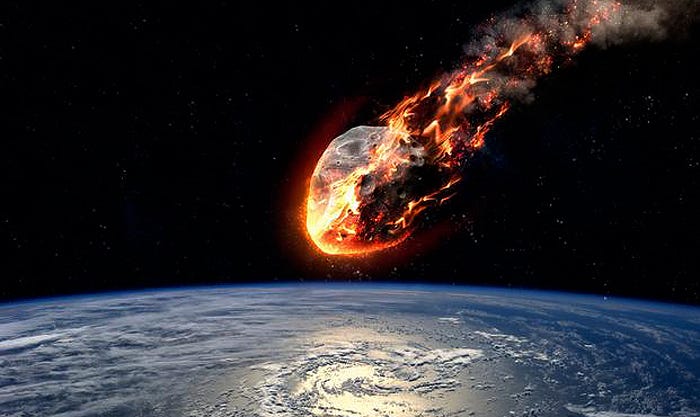
We cannot say if the Younger Dryas populations were themselves a surviving remanent of an older non-industrial culture. I wonder though in regards to defense against incoming celestial objects what your thoughts are in regard to electric comets. In her November 2021 doctoral thesis, Sofia Bergman, PhD student at the Swedish Institute of Space Physics, used SPIS (Spacecraft Plasma Interaction Software) to measure low-energy ions around Comet 67P/Churyumov-Gerasimenko. A large amount of positive ions were measured flowing inward towards the comet's nucleus—instead of outward as expected—evidence of a negatively charged object.
Independent researcher, Stuart Talbott, details the electrical relationship between a comet and the solar environment—a negatively charged body suddenly entering into a more positively charged domain will discharge electrically—and provides new evidence that comets are yet another realization of our Electric Universe. https://youtu.be/_0GRQGJQSYg
I believe the village destruction story was reported by Peter Arnette. It may have been
fabricated by him. You might have better contacts on that than I.